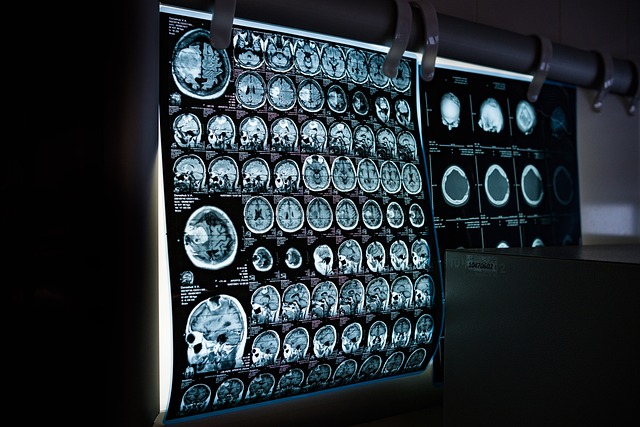ETNS and Epilepsy: Non-Invasive Neuromodulation Explained
External trigeminal nerve stimulation (ETNS) is a non-invasive neuromodulation approach studied as an adjunct to standard seizure management. This article explains what ETNS is, how it may influence seizure control and daily living, recent device advances, and practical ways to monitor progress during therapy for people living with epilepsy worldwide.

External trigeminal nerve stimulation (ETNS) delivers small electrical pulses via electrodes placed on the forehead to stimulate branches of the trigeminal nerve. It is explored as an add-on option alongside anti-seizure medications and other established therapies. Evidence from clinical studies suggests some individuals may experience fewer seizures, improved sleep, or better mood, while others may see limited benefit. Because responses vary, ETNS should be considered within a comprehensive care plan supervised by qualified clinicians.
How can ETNS support quality of life?
Quality of life in epilepsy is influenced by seizure frequency, medication side effects, sleep, mood, cognition, and independence at work or school. Research into How ETNS Supports Quality Of Life Improvement In Epilepsy points to potential benefits beyond seizure counts, such as better sleep quality and reduced anxiety in some participants. These effects may result from modulation of networks involved in arousal and emotional regulation. Outcomes are not uniform, so realistic expectations, careful goal-setting, and regular follow-up are essential.
Practical quality-of-life goals might include shortening postictal recovery time, improving concentration, or stabilizing sleep routines. Clinicians often recommend pairing ETNS with sleep hygiene, stress-management techniques, and medication optimization to maximize potential gains while monitoring for skin irritation or tingling under the electrodes.
What’s new in ETNS neurotechnology?
Advances In Neurotechnology And ETNS Device Development focus on user comfort, stimulation precision, and data connectivity. Modern systems typically use adhesive or wearable electrode arrays positioned over the supraorbital region, with programmable parameters such as pulse width, frequency, and duty cycles. Incremental hardware improvements aim to deliver consistent current while minimizing discomfort and preserving battery life.
Software ecosystems are also evolving. Companion apps can record session adherence, prompt scheduled stimulations, and sync with seizure diaries. Some research explores adaptive, or closed-loop, concepts that could someday tailor stimulation to individual patterns; however, these approaches remain investigational for many users. Safety features, such as automatic shutoff and robust electrode contact detection, continue to improve the day-to-day experience.
Benefits of non-invasive neuromodulation
The Benefits Of Non Invasive Neuromodulation For Epilepsy include avoiding surgical implantation and the associated recovery time. ETNS can often be started in an outpatient setting, paused for troubleshooting, and adjusted as needed. Reported adverse effects are usually mild and may include local skin irritation, tingling, or transient headaches. Any persistent discomfort, dizziness, or skin reactions should be discussed with a clinician promptly.
Non-invasive neuromodulation fits within a broader toolkit that includes medications, dietary therapies, resective or ablative surgery for eligible focal epilepsies, and implantable devices such as vagus nerve stimulation (VNS), deep brain stimulation (DBS), or responsive neurostimulation (RNS). ETNS does not replace these options; rather, it may be considered when seizures persist despite medications, when other options are unsuitable, or as part of a staged approach under specialist guidance.
Monitoring progress during ETNS
Monitoring Progress During ETNS Therapy helps determine whether the intervention is meaningfully helping. A structured seizure diary remains the foundation: record date, time, duration, type of event, possible triggers, injuries, and recovery features. Pair these entries with ETNS session logs (time on stimulation, intensity, missed sessions) to identify relationships between adherence and outcomes.
Objective metrics can add clarity. Wearable devices and smartphone apps may capture sleep duration, heart rate variability, and activity patterns that correlate with seizure risk for some people. Periodic clinical assessments—neurological examination, medication level checks, and when indicated, EEG—can help interpret changes. Patient-reported outcome measures (e.g., sleep quality or anxiety scales) provide additional insight into daily functioning.
To evaluate benefit, clinicians often use pre-defined intervals (for example, 8–12 weeks) to compare baseline seizure frequency and quality-of-life measures against on-therapy periods. If no meaningful improvement is observed, parameters may be adjusted, or the therapy may be discontinued. Clear communication among the care team, the person receiving therapy, and caregivers supports safe, data-driven decisions.
Practical considerations and safety
Before starting ETNS, discuss medical history, seizure types, current medications, and any implanted electronic devices that could interact with stimulation. Proper electrode placement and skin preparation reduce irritation and improve signal consistency. Establish a realistic schedule that fits daily routines—many protocols recommend evening or nightly sessions—to maintain adherence without disrupting sleep.
ETNS is not a cure for epilepsy, and benefits, when present, tend to build gradually over weeks. Documenting small but meaningful changes—fewer missed classes, better sleep continuity, or quicker recovery after events—can be as important as counting seizures. If side effects emerge, pausing and consulting the clinical team is prudent. For children or individuals who need assistance, training caregivers in electrode application and device handling improves reliability and comfort.
The broader care context
Successful seizure management is multifaceted. Combining ETNS with evidence-based strategies—medication adherence, trigger management, adequate sleep, and psychosocial support—offers a more complete approach. People with persistent seizures should be evaluated at specialized epilepsy centers to explore all options, including surgical and implantable-device assessments, when appropriate. As neurotechnology advances, data-informed personalization may improve the consistency of responses to non-invasive stimulation.
This article is for informational purposes only and should not be considered medical advice. Please consult a qualified healthcare professional for personalized guidance and treatment.




